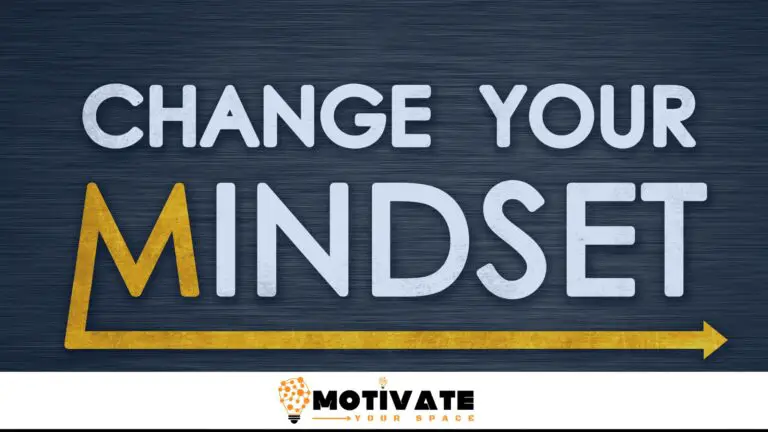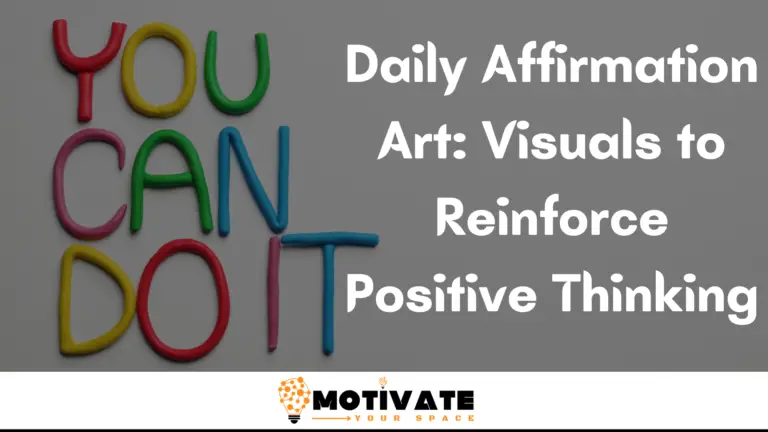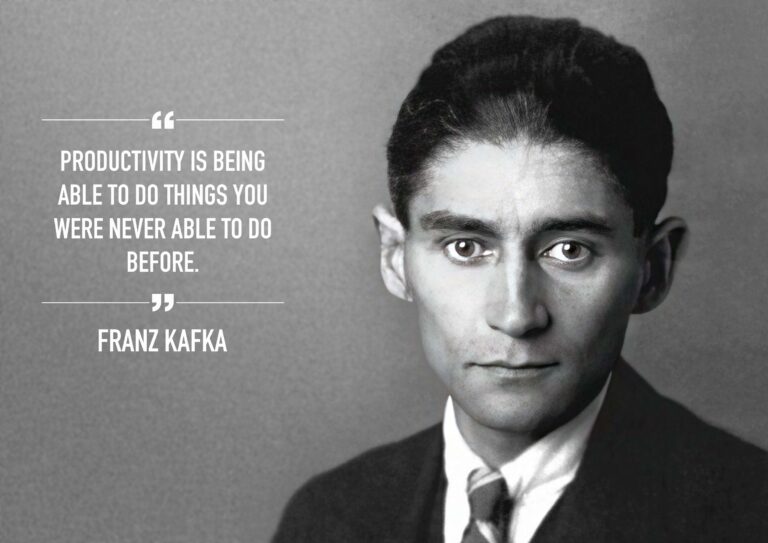7 Daily Motivational Art Practices for Personal Growth: Transform Your Life
Daily motivational art practices can significantly boost personal growth. They cultivate creativity, mindfulness, and emotional expression.
Art serves as a powerful tool for personal development, offering a creative outlet and fostering mental well-being. Engaging in daily art practices can enhance self-awareness, reduce stress, and improve problem-solving skills. These practices can be as simple as sketching, painting, or journaling.
Setting aside time each day to create allows individuals to explore their inner thoughts and emotions. This consistent habit can lead to increased mindfulness and emotional resilience. By incorporating art into daily routines, individuals can experience a sense of accomplishment and personal fulfillment. Art can transform the way we perceive and interact with the world, leading to lasting personal growth.
Morning Sketch Routine
Kickstart your day with a refreshing morning sketch routine. This practice can boost your creativity and focus. It’s a great way to set a positive tone for the day. Follow these simple steps to make your morning sketch routine effective.

Setting Up Your First, find a quiet corner in your home. This space should be free from distractions. Ensure it’s well-lit and comfortable. A clean and organized space can help you concentrate better. Consider adding some inspirational items, like posters or plants.
Choosing Your Tools
Select the right tools for your sketching. Here are some essentials:
- Sketchbook: A quality sketchbook with smooth pages.
- Pencils: Have a range of pencils from soft to hard.
- Eraser: A good eraser to correct mistakes.
- Pens: Fine-tip pens for detailing.
Having the right tools can make your sketching experience enjoyable. Quality tools can also improve your artwork.
| Tool | Purpose |
|---|---|
| Sketchbook | To draw your ideas |
| Pencils | For shading and outlines |
| Eraser | To correct mistakes |
| Pens | For fine details |
Start your day with a simple sketch. Even 10 minutes can make a difference. This practice can help you grow personally and creatively. Happy sketching!
Affirmation Art
Affirmation Art is a powerful tool for personal growth. It combines the benefits of art and positive affirmations. This practice helps in fostering a positive mindset and boosting self-esteem. You can use various techniques to integrate affirmations into your daily routine.
Incorporating Positive Quotes
Positive quotes can uplift your mood instantly. They remind you of your goals and aspirations.
- Choose quotes that resonate with you.
- Write them down in your journal.
- Display them in places you frequent.
Every morning, read a quote aloud. Feel its power and embrace its message. Use vibrant colors to write these quotes. Decorate them with doodles or stickers. This makes the process enjoyable and visually appealing.
Creating Visual Reminders
Visual reminders help in reinforcing positive thoughts. They keep you motivated throughout the day.
- Create a vision board with affirmations.
- Use sticky notes on your mirror or fridge.
- Design affirmation cards and carry them with you.
Use different art supplies like markers, paints, and glitters. This makes your visual reminders eye-catching. Change your reminders regularly. This keeps the practice fresh and engaging.
| Technique | Materials Needed | Benefits |
|---|---|---|
| Positive Quotes | Journal, Markers, Stickers | Boosts morale, Encourages positivity |
| Visual Reminders | Sticky Notes, Paints, Glitters | Reinforces affirmations, Enhances creativity |
Affirmation art is simple yet effective. It merges creativity with positive thinking. Start today and witness the change in your outlook.
Meditative Drawing
Meditative drawing combines art and mindfulness. It helps calm the mind and boosts creativity. This practice involves drawing simple patterns and focusing on each stroke. It helps you stay present and aware. It is a powerful tool for personal growth and stress relief.
Benefits Of Mindful Art
Mindful art has many benefits for your mind and soul. Here are some key benefits:
- Reduces Stress: Drawing mindfully can lower stress levels.
- Boosts Focus: It helps improve concentration and attention.
- Enhances Creativity: Engaging in art opens up your creative mind.
- Encourages Self-Expression: You can express feelings through your drawings.
- Improves Emotional Well-being: It promotes a sense of calm and happiness.
Techniques To Try
Try these simple techniques to start your meditative drawing practice:
- Zentangle: Draw structured patterns known as tangles. Focus on each line and shape.
- Mandala Art: Create intricate circular designs. Start from the center and work outwards.
- Continuous Line Drawing: Draw without lifting your pen. This helps you stay present.
- Doodle Art: Let your hand move freely. Draw whatever comes to mind.
- Pattern Repetition: Repeat simple patterns. This can be very soothing.
Vision Boards
Vision Boards are a powerful tool for personal growth. They help you visualize your goals and dreams. By creating a visual representation of your aspirations, you can stay motivated and focused.
Materials Needed
- Poster board or corkboard
- Magazines and newspapers
- Scissors
- Glue or push pins
- Markers and pens
- Inspirational quotes and images

Crafting Your Dreams
Start by gathering all your materials. Cut out images and words that inspire you. These should represent your dreams and goals. Arrange them on your board in a way that feels right to you.
Use markers and pens to add personal touches. Write down your goals and any motivational quotes. This makes your vision board unique and personal.
Once you’re happy with the arrangement, glue or pin everything in place. Place your vision board somewhere you can see it daily. This will keep you motivated and remind you of your goals.
Updating your vision board regularly is important. As your goals evolve, so should your board. This keeps your motivation fresh and aligned with your current aspirations.
Color Therapy
Color therapy, also known as chromotherapy, uses colors to boost mood and health. Different colors can influence our emotions and feelings. Incorporating color therapy into daily art practices can enhance personal growth.
Understanding Color Psychology
Colors have a profound impact on our minds. Color psychology studies how colors affect human behavior. Each color has its unique effect:
- Red: Increases energy and passion.
- Blue: Promotes calmness and relaxation.
- Yellow: Enhances happiness and positivity.
- Green: Brings balance and harmony.
- Purple: Stimulates creativity and wisdom.
Understanding these effects can help you choose the right colors for your art practices.
Using Colors To Influence Mood
Using colors intentionally can influence your mood and emotions. Here’s how you can do it:
| Color | Purpose |
|---|---|
| Red | Boosts energy and motivation. |
| Blue | Reduces stress and anxiety. |
| Yellow | Increases joy and optimism. |
| Green | Brings a sense of peace. |
| Purple | Enhances creative thinking. |
To start, pick a color that resonates with your current mood. Create a piece of art using that color. Notice how it makes you feel. Repeat this practice daily and observe your emotional changes over time.
Using colors in your art can be a powerful tool for personal growth. Start experimenting with different colors. Discover what works best for you.
Creative Journaling
Creative journaling is a powerful tool for personal growth. It combines art and words to express thoughts and feelings. This practice helps you understand yourself better. It also boosts your creativity and mental health.
Combining Art And Words
Combining art and words can be very enriching. You can draw, paint, or doodle alongside your writing. This makes your journal visually appealing and more expressive.
Here are some ways to combine art and words:
- Doodle in the margins of your pages
- Paint a scene that represents your feelings
- Collage with cut-out images and words
- Sketch a quick illustration of your day
Prompts To Inspire
Sometimes, you need a little inspiration to get started. Here are some prompts to inspire your creative journaling:
| Prompt | Activity |
|---|---|
| Describe your perfect day | Write and draw scenes from it |
| What are you grateful for? | Make a gratitude list with doodles |
| Draw your current mood | Use colors and shapes to express it |
| Imagine your future self | Sketch and write about your dreams |
Creative journaling can transform your daily routine. It makes personal growth fun and engaging. Start with small steps and let your creativity flow.
Art For Gratitude
Gratitude is a powerful emotion. It can transform your life. Integrating art practices into your daily routine can amplify this feeling. Creating art for gratitude can enhance your mental well-being. Let’s explore some ways to practice this daily.
Daily Gratitude Lists
Start by writing a gratitude list. Use art to decorate it. Add colors, stickers, or drawings. This makes your gratitude list more engaging and personal. Here are some steps:
- Get a notebook or journal.
- Write down three things you’re grateful for.
- Decorate with drawings or stickers.
- Read your list every night before bed.
These small steps can make a big difference. They help you focus on the positive aspects of your life.
Expressing Thanks Through Art
Another way to practice gratitude is by creating thank you cards. This can be a fun and rewarding activity. Here is a simple guide:
- Gather some blank cards and art supplies.
- Think of someone you appreciate.
- Draw or paint a picture on the card.
- Write a thank you note inside.
- Give or mail the card to the person.
This practice not only shows your gratitude but also spreads joy. It strengthens your relationships and fosters a sense of community.
Reflective Art Practice
Reflective art practice allows you to understand your growth. It helps you see how your work changes over time. Reflecting on your art offers many benefits. You can learn from your mistakes. You can also celebrate your progress.

Analyzing Your Work
Spend some time looking at your recent pieces. Ask yourself questions. What do you like about them? What could be improved? Write down your thoughts. This helps you see patterns in your work. It also helps you understand your strengths.
Setting Future Goals
Based on your analysis, set new goals. These goals should be clear and achievable. Write them down. Look at them often. This keeps you focused. You can also break big goals into smaller steps. This makes them easier to reach.
| Task | Description |
|---|---|
| Review Art | Look at recent pieces and note strengths and weaknesses. |
| Set Goals | Create clear, achievable goals based on your review. |
Frequently Asked Questions
How To Create A Daily Art Practice?
Establish a consistent schedule. Set daily goals and create a dedicated space. Keep materials ready. Track your progress. Stay motivated by joining art communities.
What Are The 4 Motivated Functions Of Art?
The four motivated functions of art are: 1) Expression of emotions, 2) Communication of ideas, 3) Exploration of aesthetics, and 4) Social or political commentary.
What Are The Four 4 Inspirations For Art?
The four inspirations for art include nature, personal experiences, cultural heritage, and societal issues. These elements drive creativity and expression.
How Can I Motivate Myself To Do Art?
Set specific goals for your art projects. Break tasks into smaller, manageable steps. Surround yourself with inspiring art. Join an art community or group for support. Celebrate your progress and achievements.
Conclusion
Embracing these daily motivational art practices can fuel personal growth. Small steps lead to big changes. Stay consistent and patient. Your creative journey is unique and valuable. Implement these practices to enhance your personal development. Keep exploring, creating, and growing each day.
Discover the artist within you and let your passion flourish.



